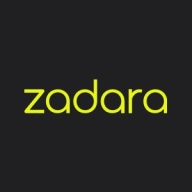

Amazon S3 and Zadara are cloud storage solutions. Amazon S3 seems to have the upper hand due to its integration and ecosystem, while Zadara stands out for its advanced features.
Features: Amazon S3 offers scalability, integration capabilities, and reliability. Zadara provides flexibility, performance, and comprehensive security.
Room for Improvement: Amazon S3 could improve data transfer speed and pricing transparency. Zadara needs an easier setup process and better documentation.
Ease of Deployment and Customer Service: Amazon S3 is known for straightforward deployment and responsive service. Zadara, with robust support, has a complex deployment process.
Pricing and ROI: Amazon S3 has reasonable pricing with a good cost-ROI balance. Zadara, though higher in cost, offers perceived better returns through advanced features.
Moving infrequently accessed data to cheaper classes like Glacier is beneficial for long-term storage at a lower cost.
Amazon S3 has a reasonable price as you pay a flat price to use it.
The cost is not cheaper compared to AWS, and we have not seen the expected return on investment.
I rate the technical support from Amazon for S3 a ten out of ten.
An engineer is assigned based on the severity of the issue.
The technical support for Amazon S3 is rated ten out of ten.
We lack adequate response times and a 24/7 service level agreement.
I rate the technical support from Zadara as nine out of ten.
Data placed in an S3 bucket is replicated across availability zones in a region, ensuring scalability and availability.
The level of scalability allows storage to automatically scale on demand, without the need for manual intervention.
Amazon S3's automatic scaling has benefited me, as I don't need to plan storage requirements.
Zadara is a fully-fledged platform, and our customers are happy with its use.
There is zero latency or downtime.
Transitioning between S3 storage classes, like moving data from the standard class to Glacier or Glacier Deep Archive, has been challenging.
Amazon S3 is highly stable.
An improvement could be associating the naming with personal accounts, allowing more familiar or desired names without conflicting with global conventions.
The practice of protecting data could be more streamlined or mandatory.
I would like to see an increase in the data upload limit, similar to DynamoDB, where there is no data limit.
Adding AI capabilities could enhance the offering as well.
Maintenance can also be complicated, especially when deeper troubleshooting requires navigating the CLI and searching for logs.
I've used the free tier and haven't been charged yet.
S3 offers multiple classes, allowing you to move data to cheaper classes for cost savings.
It is somewhat justified due to the benefits, but there is room for reconsideration.
The pricing is considered expensive.
Its stability and scalability are also impressive, as it allows for increased storage space according to demand.
I appreciate its capability to create static websites and integrate with services like CloudFront, EC2, and DynamoDB.
Security measures like encryption, access controls, and the block public access feature are also important.
The most valuable feature is its storage management capability.
Zadara's troubleshooting feature is very valuable for me.
| Product | Market Share (%) |
|---|---|
| Amazon S3 | 13.8% |
| Zadara | 1.6% |
| Other | 84.6% |


| Company Size | Count |
|---|---|
| Small Business | 33 |
| Midsize Enterprise | 17 |
| Large Enterprise | 38 |
| Company Size | Count |
|---|---|
| Small Business | 12 |
| Large Enterprise | 3 |
Amazon Simple Storage Service is storage for the Internet. It is designed to make web-scale computing easier for developers.
Amazon S3 has a simple web services interface that you can use to store and retrieve any amount of data, at any time, from anywhere on the web. It gives any developer access to the same highly scalable, reliable, fast, inexpensive data storage infrastructure that Amazon uses to run its own global network of web sites. The service aims to maximize benefits of scale and to pass those benefits on to developers.
Zadara is a powerful enterprise-level storage solution whose design enables it to handle every aspect of a user’s data storage needs. It can be deployed in any location, using any protocol, and storing any data type that an organization requires. With Zadara, organizations can do everything that they were able to do with more traditional systems in a cheaper and more efficient way.
Zadara Benefits
Some of the ways that organizations can benefit by choosing to deploy Zadara include:
Zadara Features
File analytics. Organizations can leverage a powerful analytics package that can provide them with critical insights. These tools can help users sort through their data and make more informed data management decisions.
Reviews from Real Users
Zadara is a highly effective solution that stands out when compared to many of its competitors. Two major advantages it offers are its extensive suite of cloud solution integrations and its object storage capability.
Steve H., the chief technology officer at Pratum, writes, “One of the most valuable features is its integration with other cloud solutions. We have a presence within Amazon EC2 and we leverage computer instances there. Being able to integrate with computing, both locally within Zadara, as well as with other cloud vendors such as Amazon, is very helpful, while also being able to maintain extremely low latency between those connections.”
Mauro R., the CEO of Momit SRL, says, “The object storage feature is wonderful. With traditional storage, you have a cost per gigabyte that is extremely high or related to the number of disks. With Zadara Storage Cloud, you have a cost per gigabyte that you can cut and tailor to your needs independent of the number or size of the disks.”
We monitor all Public Cloud Storage Services reviews to prevent fraudulent reviews and keep review quality high. We do not post reviews by company employees or direct competitors. We validate each review for authenticity via cross-reference with LinkedIn, and personal follow-up with the reviewer when necessary.